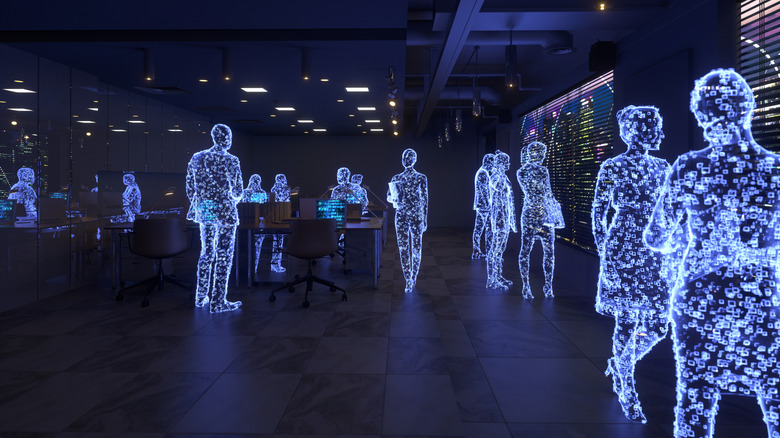Yes, Wi-Fi Routers Can Detect Movement In Your House - Here's How
There's a good chance the same Wi-Fi router beaming Netflix to your living room is also capable of something far more surprising, like detecting your movement. When you walk around the kitchen, change your sleep position, or simply breathe, there are tiny disruptions in wireless signals that can be tracked with surprising accuracy. All of it sounds a bit overwhelming, but this tech is very real, and it's already quietly making its way into our lives through smart home devices from ISPs and chipmakers.
Your Wi-Fi router knows you are near and senses your tiniest movements by analyzing how electromagnetic waves ripple and scatter when they interact with moving objects. Unlike cameras or microphones, these sensors don't collect visual or audio data. Instead, they detect presence, motion, and even heartbeats using changes in signal strength. In 2015, a team from MIT demonstrated this in a fall-detection prototype that was shown to President Obama because of the promise the technology held. Today, startups like Xandar Kardian are designing this tech for health care, while Comcast's Xfinity Wi-Fi Motion focuses on home motion detection.
How Wi-Fi sees without eyes
So, how exactly does this technology work? Wi-Fi sensing operates in two steps: first, it collects raw data called channel state information, then machine learning models interpret the patterns in the electromagnetic signals. Even small changes in a room, like a person shifting in a chair, can interfere with Wi-Fi signals enough to be noticed. In fact, Wi-Fi can even detect movements through walls or furniture, thanks to its non-line-of-sight capabilities.
Newer Wi-Fi routers are better equipped to gather the detailed signal data required for motion sensing. Improvements like wider bandwidths and multiple antennas help boost the precision and range of detection. The Institute of Electrical and Electronics Engineers (IEEE) – a global organization that develops technical standards — is finalizing new standards to help devices and apps share this data more easily. This means future hardware and software will work together more reliably, making Wi-Fi sensing more practical and widespread.
What are the privacy implications?
Here's where things get a little complicated. While this tech doesn't rely on cameras or microphones, it still raises serious privacy concerns. In theory, someone sitting outside your home could detect movement — or even know you're not at home — based on how your Wi-Fi signals are disrupted. A 2025 study by researchers from Southwest Petroleum University and the University of Electronic Science and Technology of China warned that "Wi-Fi sensing can capture sensitive information such as user movements, locations, and even breathing patterns. This capability, while beneficial for legitimate applications, opens the door to various security vulnerabilities."
As Wi-Fi sensing quietly expands, some devices could keep it active by default, although this depends on the manufacturer. So far, companies are being pretty transparent. Xfinity's Wi-Fi Motion, for example, is off by default and must be enabled in the Xfinity app. Users can toggle motion tracking on or off, adjust motion and pet sensitivity, and select which devices to use for sensing. Still, experts caution restraint. In an interview with MIT Technology Review in 2024, Ray Liu, founder of Origin Wireless and former IEEE president, said, "This is a technology that can help change the world. Nevertheless, we as a society need to draw a red line."


